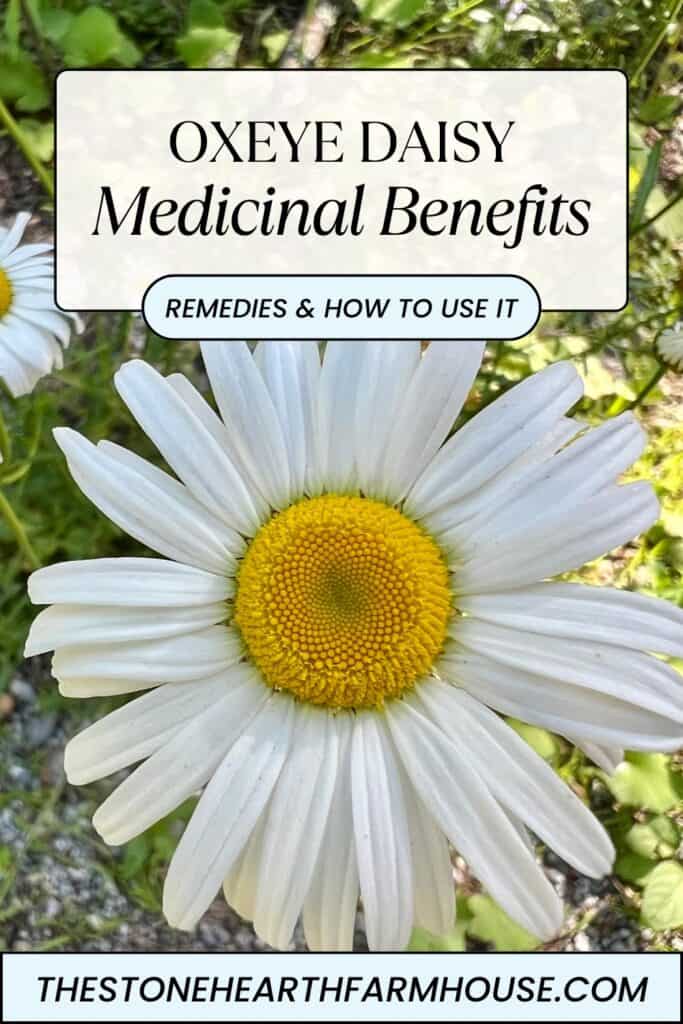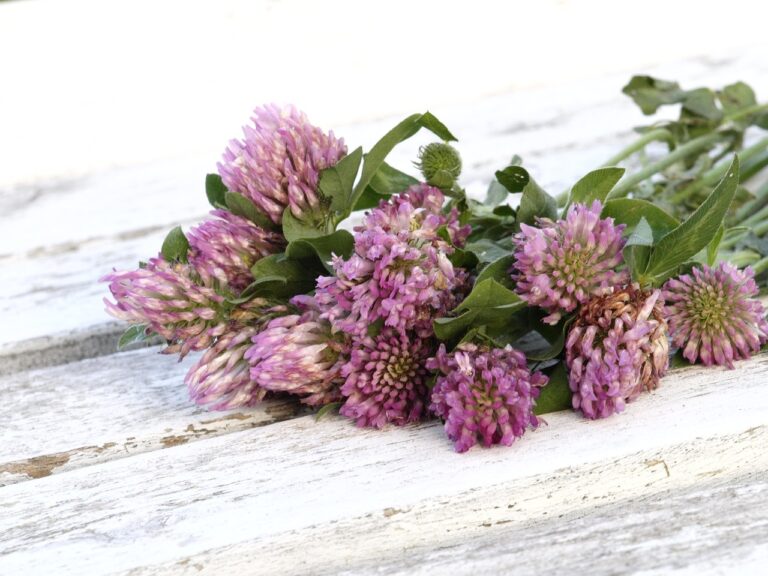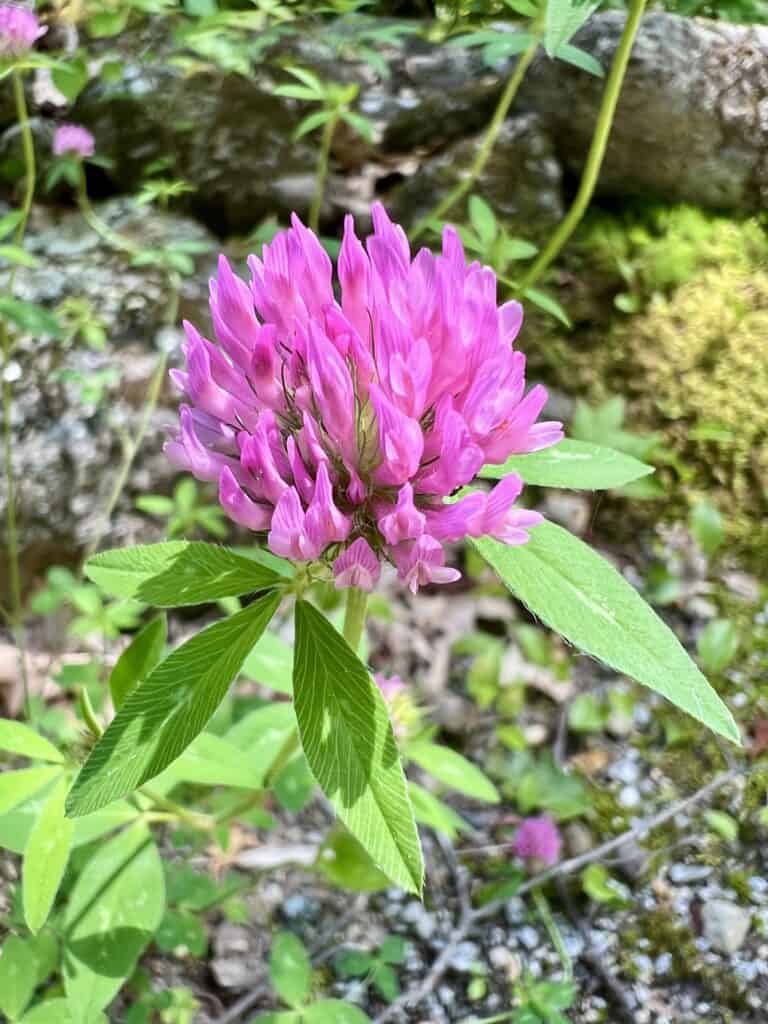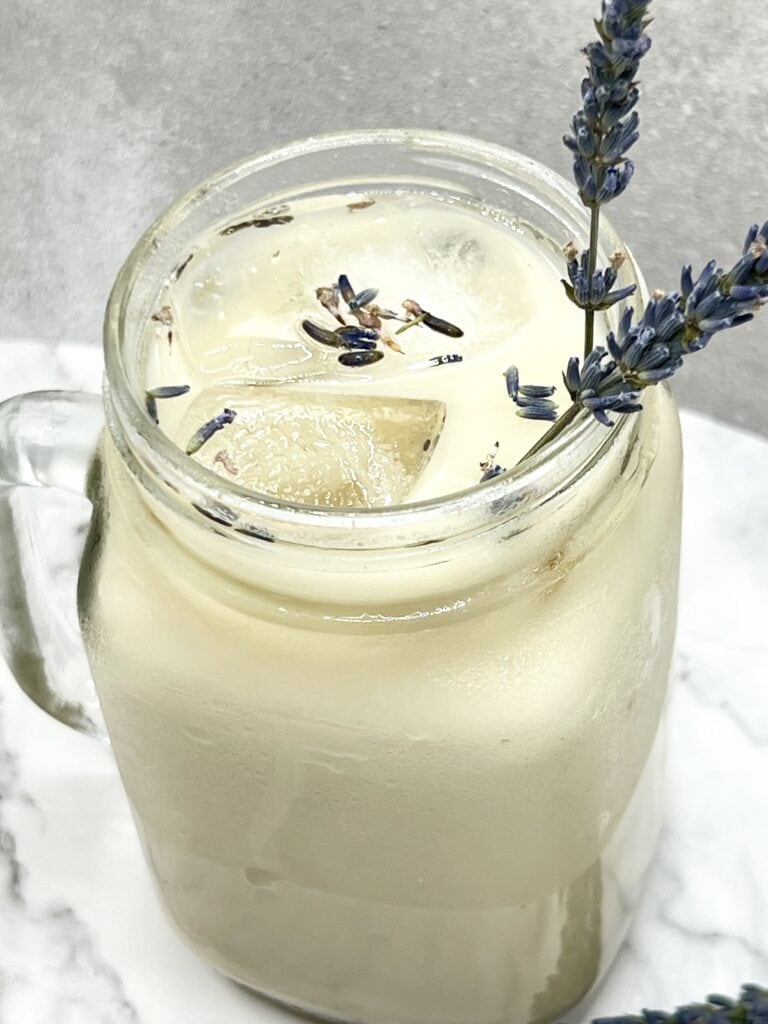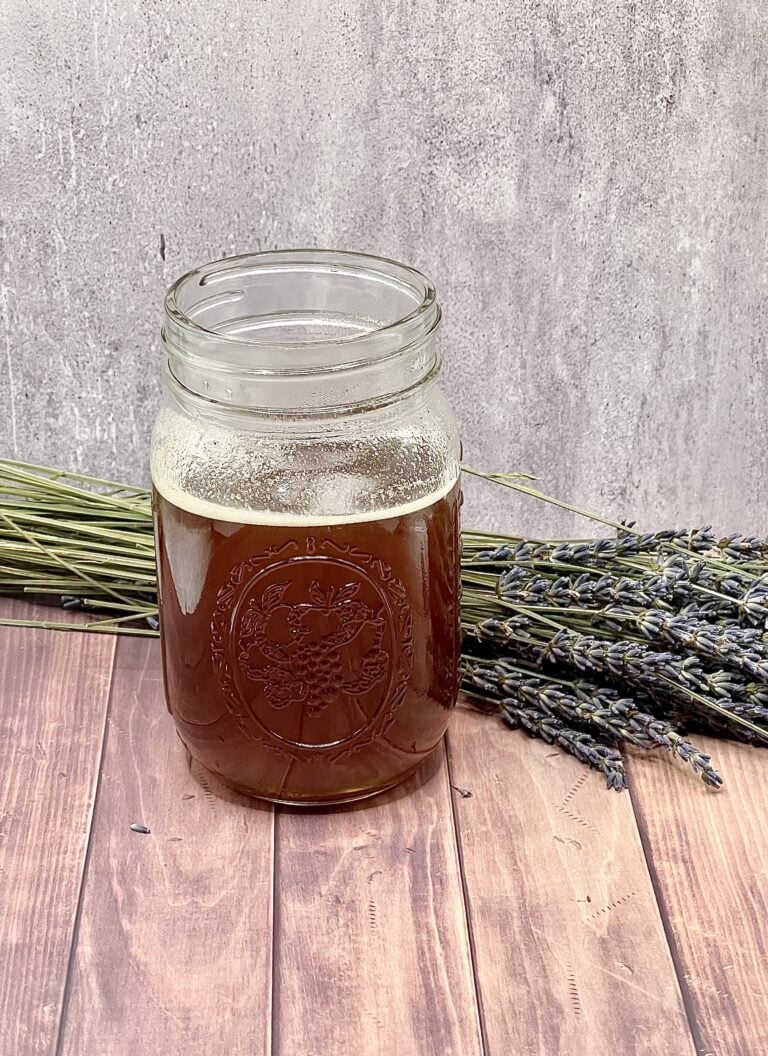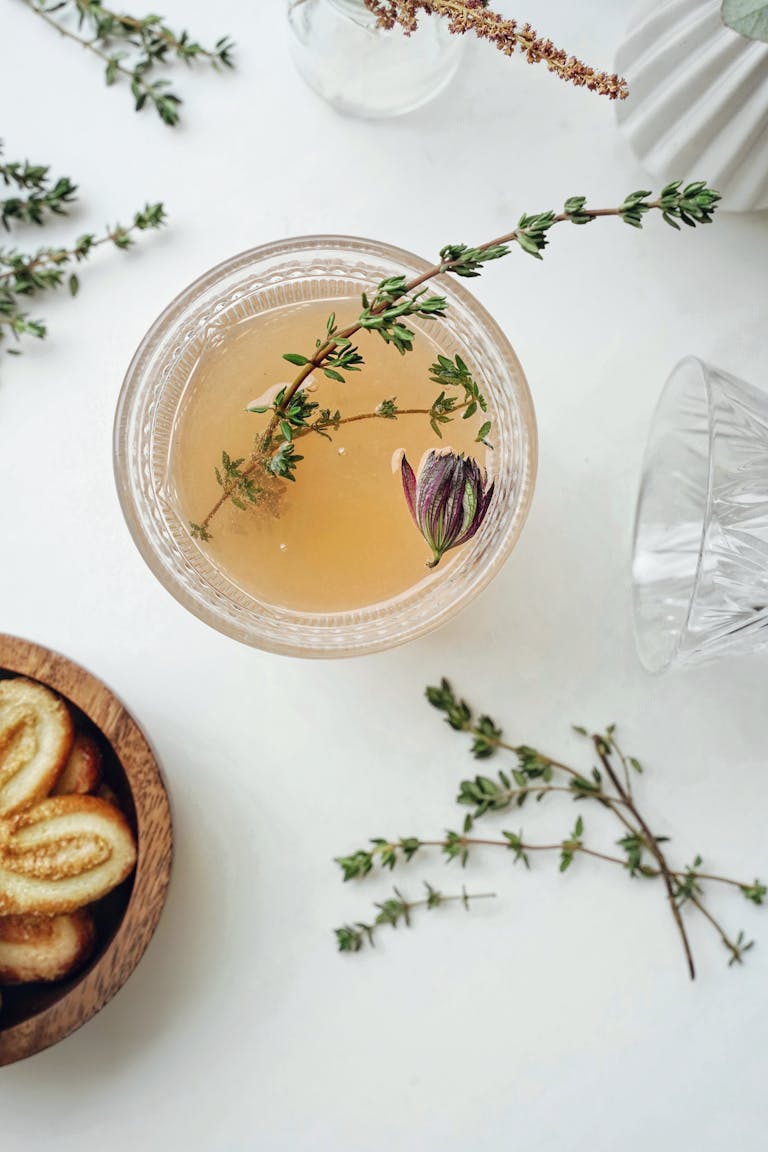The Beautiful Oxeye Daisy & its Medicinal Uses: Health Benefits, Remedies & How to Use It
The oxeye daisy (Leucanthemum vulgare) is more than just a pretty wildflower dotting fields and roadsides. While many people admire its classic white petals and sunny yellow center, herbalists have long known that this humble daisy has a powerful place in natural medicine. In this post, we’ll explore the medicinal uses of oxeye daisy, how to harvest and prepare it, and ways you can incorporate it into your herbal remedies.
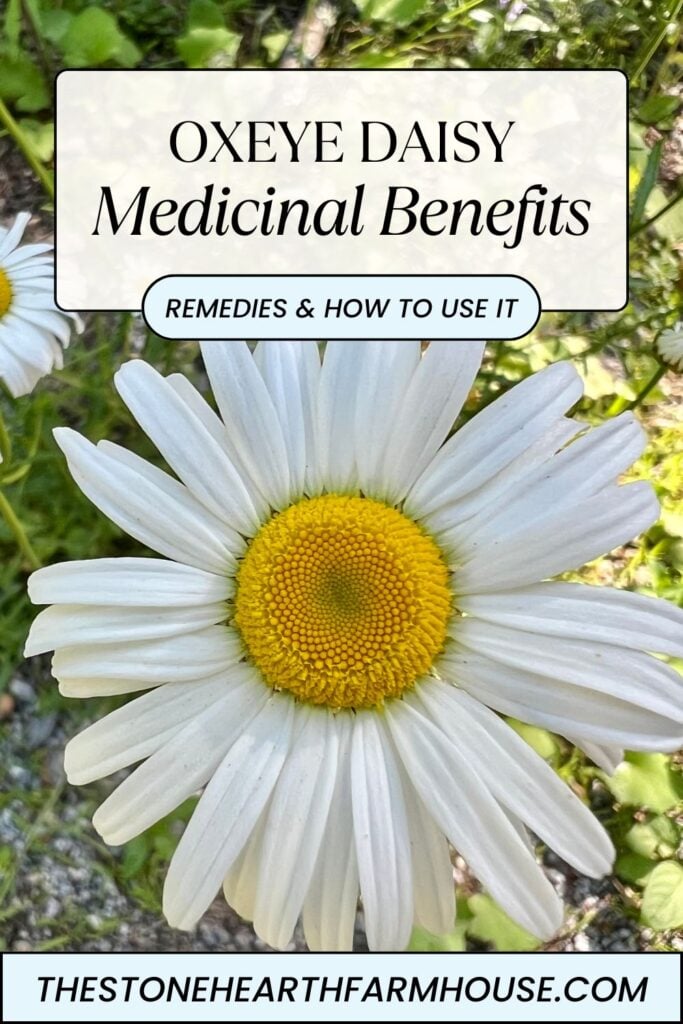
Whether you’re a seasoned herbalist or just beginning your journey into the world of medicinal plants, understanding oxeye daisy medicinal uses will deepen your appreciation for this overlooked yet valuable plant.
What Is Oxeye Daisy?
Oxeye daisy is a perennial wildflower native to Europe and parts of Asia but has spread widely across North America and other regions. It often grows in meadows, along roadsides, and in disturbed soils. Some gardeners consider it invasive, but herbalists recognize its traditional medicinal value.
Botanical Name: Leucanthemum vulgare
Family: Asteraceae (same family as chamomile and echinacea)
Not to be confused with similar flowers like Shasta daisies or chamomile, the oxeye daisy has unique therapeutic properties and an earthy, slightly bitter taste.
Traditional Medicinal Uses of Oxeye Daisy
Oxeye daisy has been used for centuries across Europe for a range of ailments. Many of its traditional uses overlap with those of chamomile, although oxeye daisy has its own distinct strengths. Here are some of the most notable oxeye daisy medicinal uses:
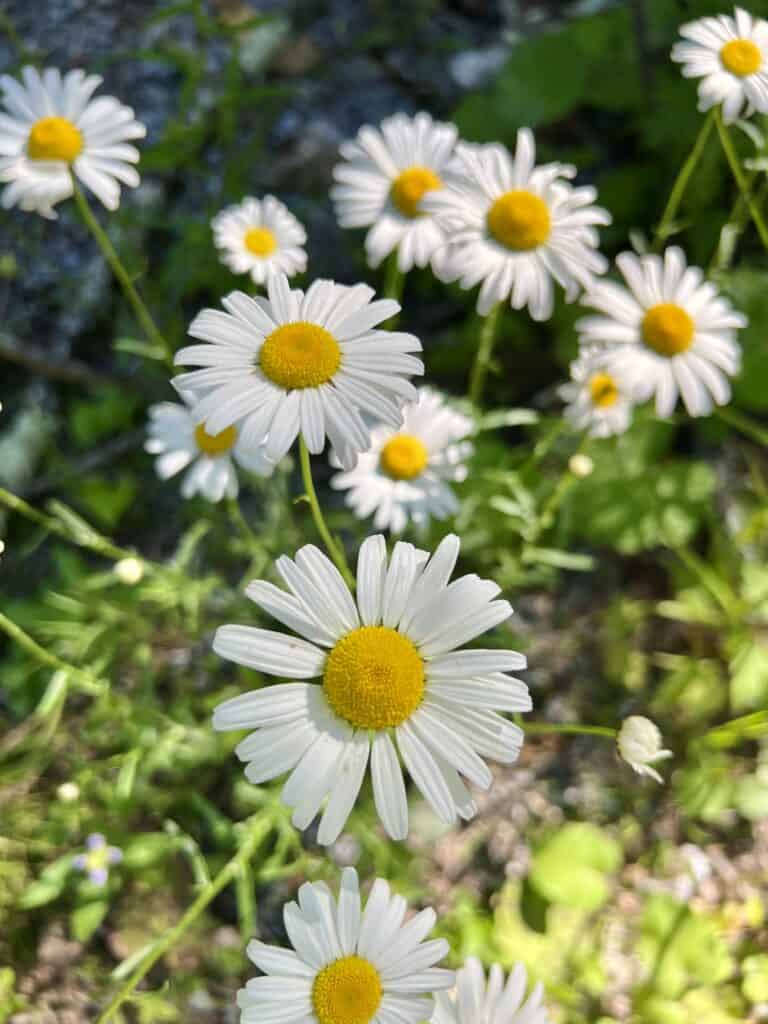
1. Respiratory Support
One of the most common historical uses of oxeye daisy is as a remedy for coughs, bronchitis, and asthma. The plant has mild expectorant properties, helping the body clear mucus and soothe irritated airways.
How to use:
A warm tea made from dried oxeye daisy flowers can help ease chest tightness and soothe a dry cough. Some herbalists also make a tincture for more concentrated support.
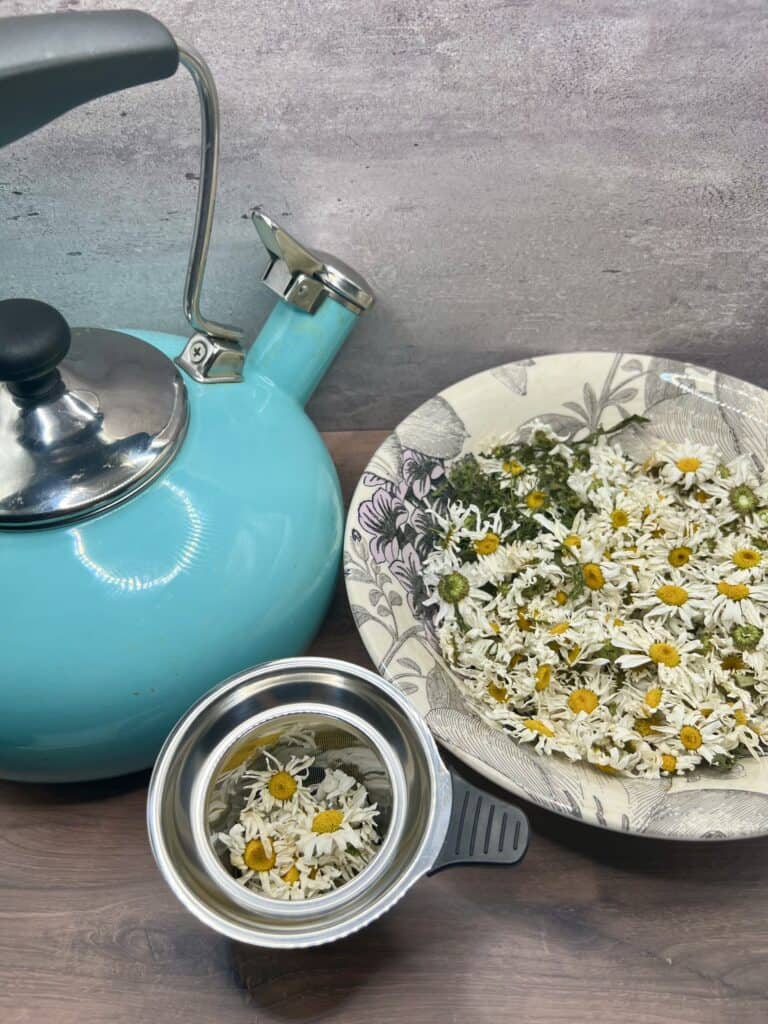
2. Digestive Aid
Like many bitter herbs, oxeye daisy is useful for supporting digestion. Its slightly bitter flavor stimulates the production of digestive juices, which can improve appetite and alleviate issues like indigestion, bloating, and gas.
How to use:
A small cup of oxeye daisy tea before meals may help prime the digestive system and prevent discomfort.
3. Anti-inflammatory and Pain Relief
Oxeye daisy contains natural anti-inflammatory compounds that have been used to relieve arthritis pain, muscle soreness, and general inflammation. When applied externally, it may soothe sore joints or minor wounds.
How to use:
Infuse the flowers in oil and use it as a massage oil, or create a poultice from fresh or dried plant material.
4. Wound Healing and Skin Support
Traditionally, oxeye daisy was applied to cuts, bruises, and scrapes as a healing herb. It’s believed to have mild antiseptic and astringent properties that help cleanse wounds and tighten tissues, promoting faster healing.
How to use:
Oxeye daisy flowers can be used to make a gentle herbal salve, perfect for your natural first aid kit. A cooled infusion can also be used as a wash for minor skin irritations.
5. Calming and Nervine Properties
Oxeye daisy is considered a gentle nervine, helping to calm the nervous system. Historically, it was used to treat insomnia, anxiety, and nervous tension—similar to chamomile.
How to use:
Drink as a tea in the evening to wind down or during stressful periods. It pairs well with lemon balm or lavender for a relaxing herbal blend.
How to Harvest and Prepare Oxeye Daisy
If you want to use oxeye daisy medicinally, here’s a guide to collecting and preparing this useful plant.
When to Harvest
- Flowers: Harvest when they’re fully open and fresh, ideally in the morning after the dew has dried.
- Leaves: Can be picked at any point during the growing season, preferably before the plant begins to flower.
- Roots: Typically harvested in the fall after the plant dies back.
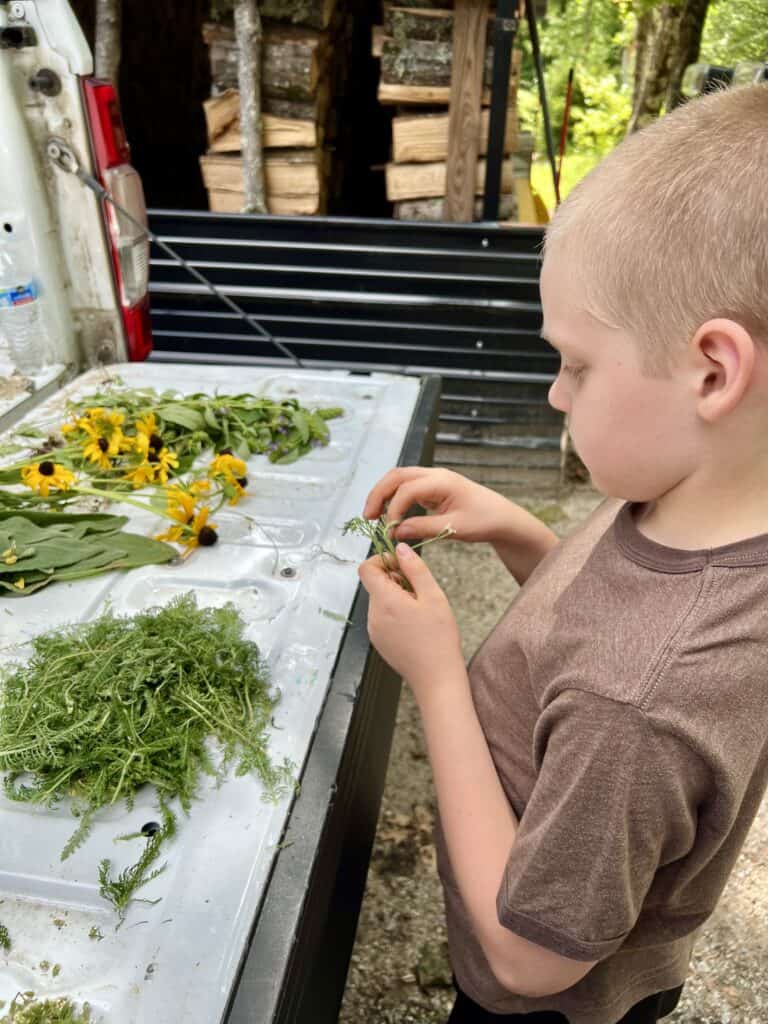
Important: Make sure you correctly identify the plant. While oxeye daisy is not toxic, some look-alikes may be. Always consult a plant identification guide or an experienced herbalist.
Drying Oxeye Daisy
To preserve oxeye daisy for future use:
- Gently rinse the flowers and leaves.
- Spread them out in a single layer on a drying rack or a clean screen.
- Keep them in a dry, dark, and well-ventilated area.
- Once fully dried, store in an airtight container away from sunlight.
Dried flowers can be used for teas, tinctures, or infused oils.
How to Dry Oxeye Daisy in a Dehydrator
While air-drying is the traditional method for preserving herbs, using a dehydrator can speed things up—especially in humid climates or during rainy spells. If you’re harvesting oxeye daisy flowers for tea, infused oil, or salves, a dehydrator is a great way to gently preserve their healing properties.
Step-by-Step Instructions:
1. Harvest Carefully
Pick fully open, healthy-looking flowers in the morning after the dew has dried. Avoid any blooms that are wilted or buggy.
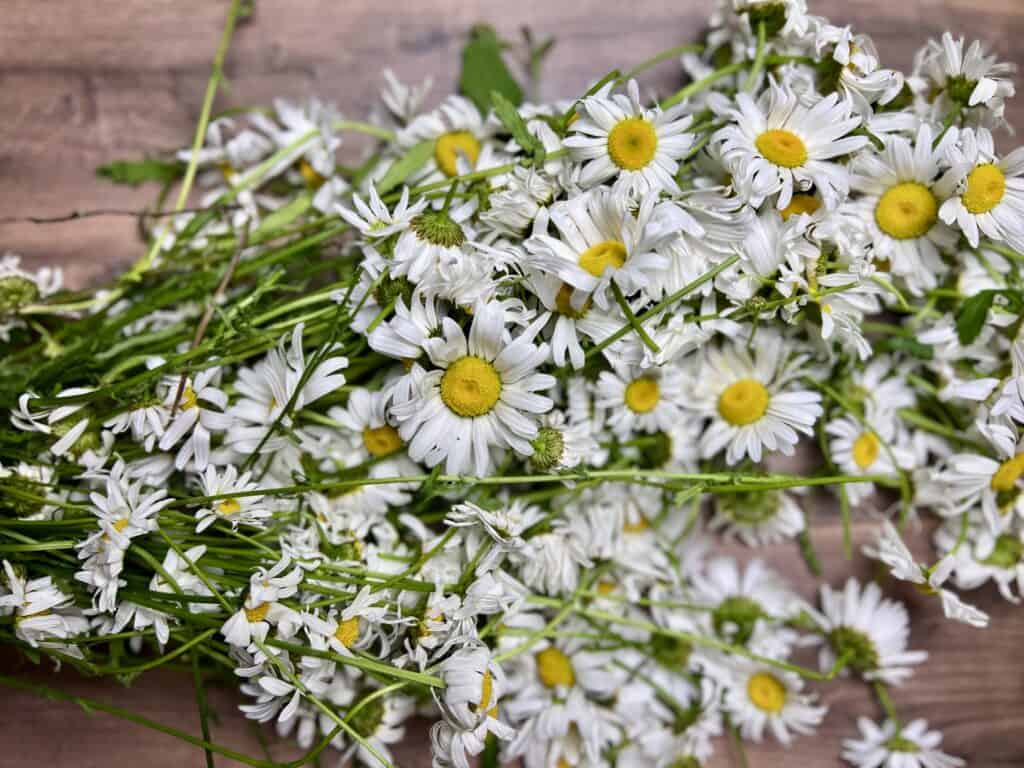
2. Clean and Prep
Shake off any dirt or insects. If needed, give the flowers a gentle rinse and let them air-dry on a towel for an hour before dehydrating.
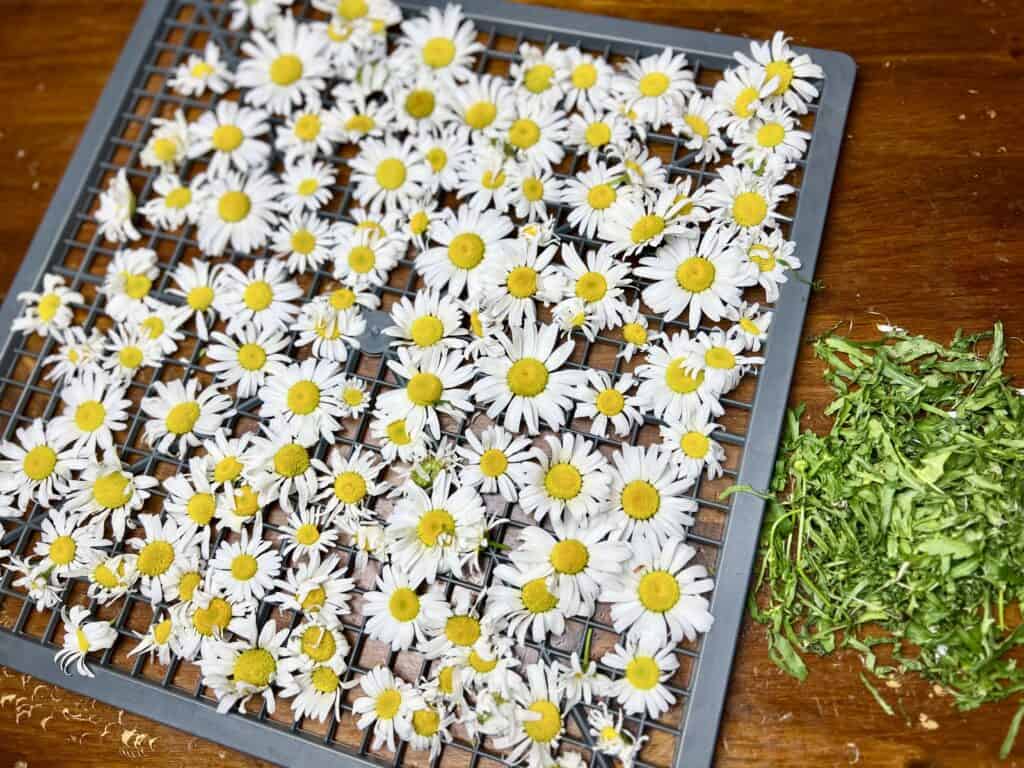
3. Arrange on Trays
Spread the flowers out in a single layer on your dehydrator trays. Avoid piling them up, as good airflow is key for even drying.
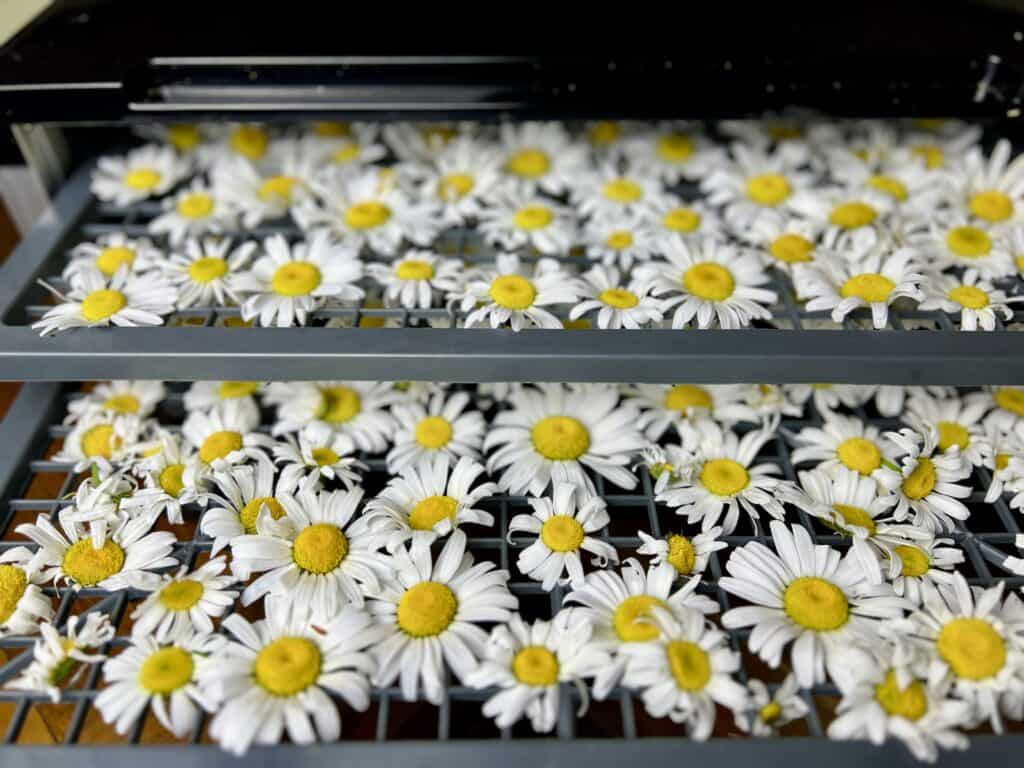
4. Set the Temperature
Use the lowest setting—ideally around 95–105°F (35–40°C)—to preserve the plant’s volatile oils and medicinal properties.
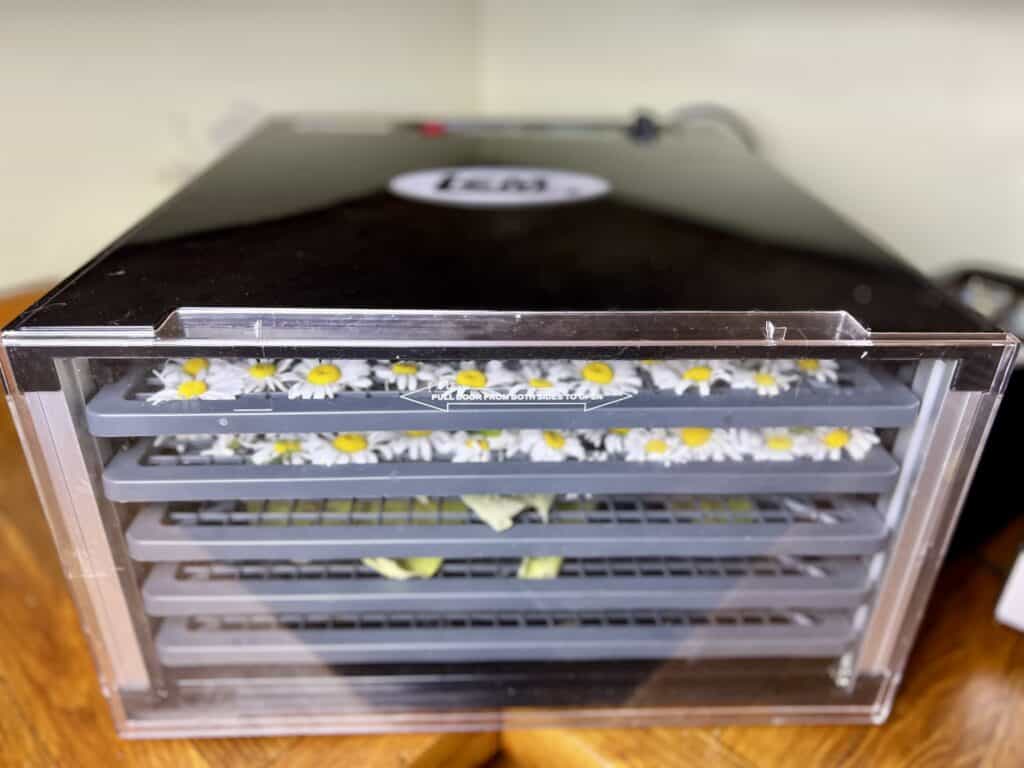
5. Drying Time
Oxeye daisy flowers usually take 6 to 10 hours, depending on moisture content and your dehydrator. They’re done when the petals feel crisp and the centers are completely dry to the touch.
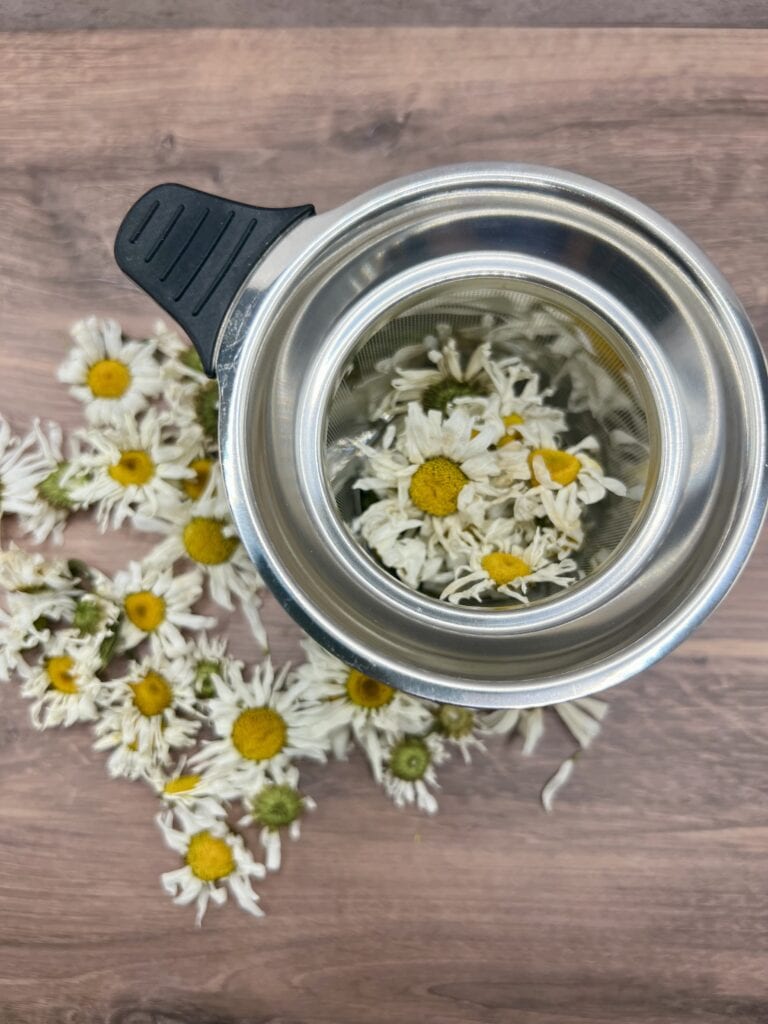
6. Cool and Store
Let them cool completely before transferring to a glass jar or airtight container. Store in a cool, dark place for up to a year.
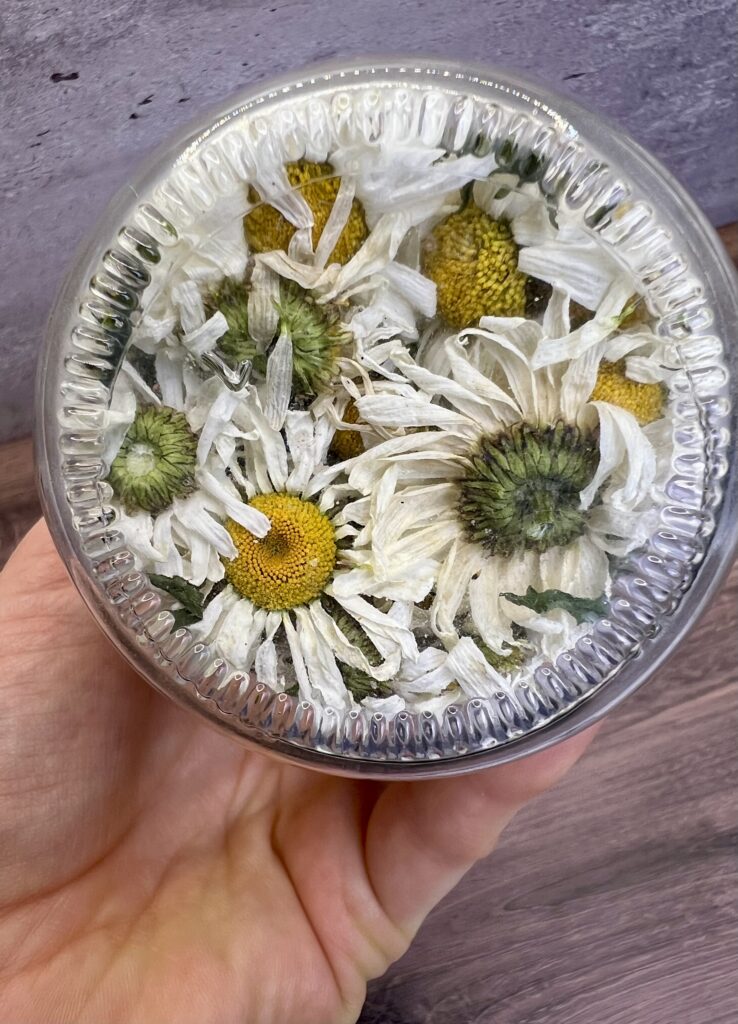
Using your dehydrator is a wonderful way to build your home apothecary quickly and confidently—no mold worries, and you’ll have shelf-stable oxeye daisy flowers ready for tea or tinctures all year long.
Making Oxeye Daisy Tea
A simple tea is one of the easiest ways to enjoy oxeye daisy’s medicinal benefits.
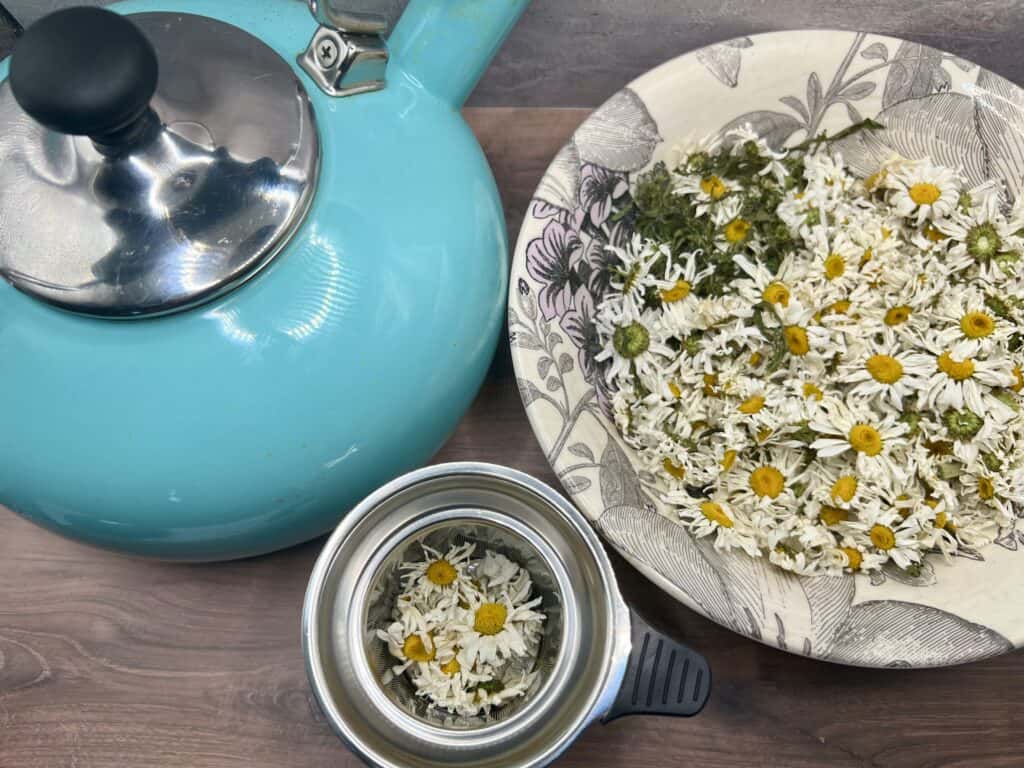
Ingredients:
- 1 tsp dried oxeye daisy flowers
- 1 cup hot water
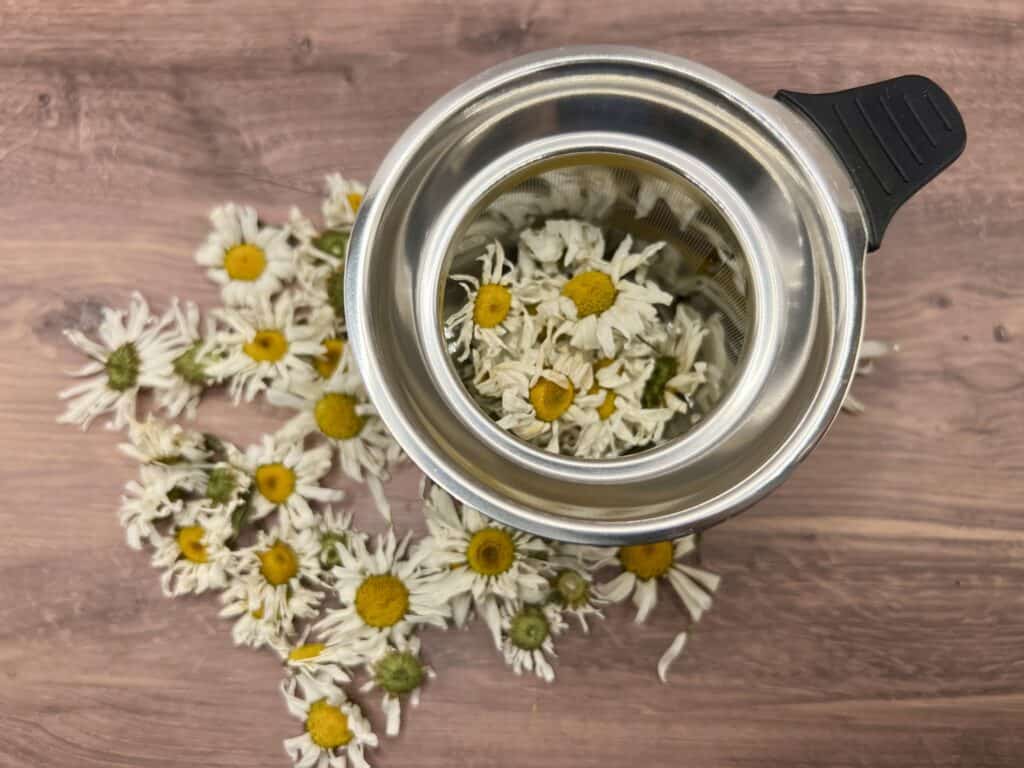
Instructions:
- Place the flowers in a tea infuser or directly in a mug.
- Pour hot (but not boiling) water over them.
- Cover and steep for 10 minutes.
- Strain, add honey if desired, and enjoy.
This tea is especially soothing for coughs, digestive upset, and stress.
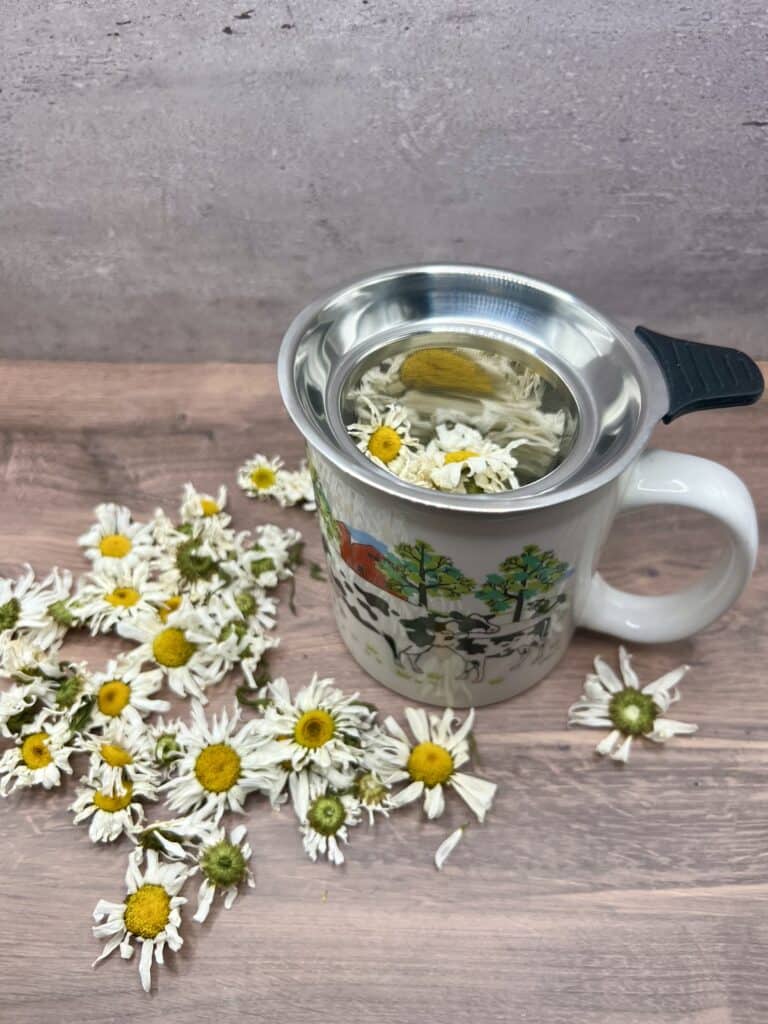
Oxeye Daisy in Modern Herbalism
While oxeye daisy is not as widely used in modern herbal shops as more popular herbs like chamomile or lavender, it still holds a place in herbal medicine and natural wellness practices. Some herbalists today are working to revive the use of lesser-known native plants, and oxeye daisy is making a quiet comeback for those who value traditional remedies.
Safety and Precautions
Oxeye daisy is generally considered safe for most people when used in moderate amounts. However, here are a few precautions to keep in mind:
- Allergies: Those allergic to plants in the Asteraceae family (like ragweed, chamomile, or echinacea) may react to oxeye daisy.
- Pregnancy and Nursing: There’s limited information on its safety during pregnancy, so consult a healthcare provider before using.
- Medication Interactions: If you’re taking medications for inflammation or blood pressure, talk with your doctor before using oxeye daisy medicinally.
Final Thoughts
Nature has given us many gentle, effective plant allies—and oxeye daisy is one of them. Its delicate white petals hide a treasure trove of medicinal benefits that have been quietly helping people for generations. Whether you’re treating a minor cut, calming a cough, or soothing an anxious mind, oxeye daisy offers a simple, accessible remedy straight from the fields.
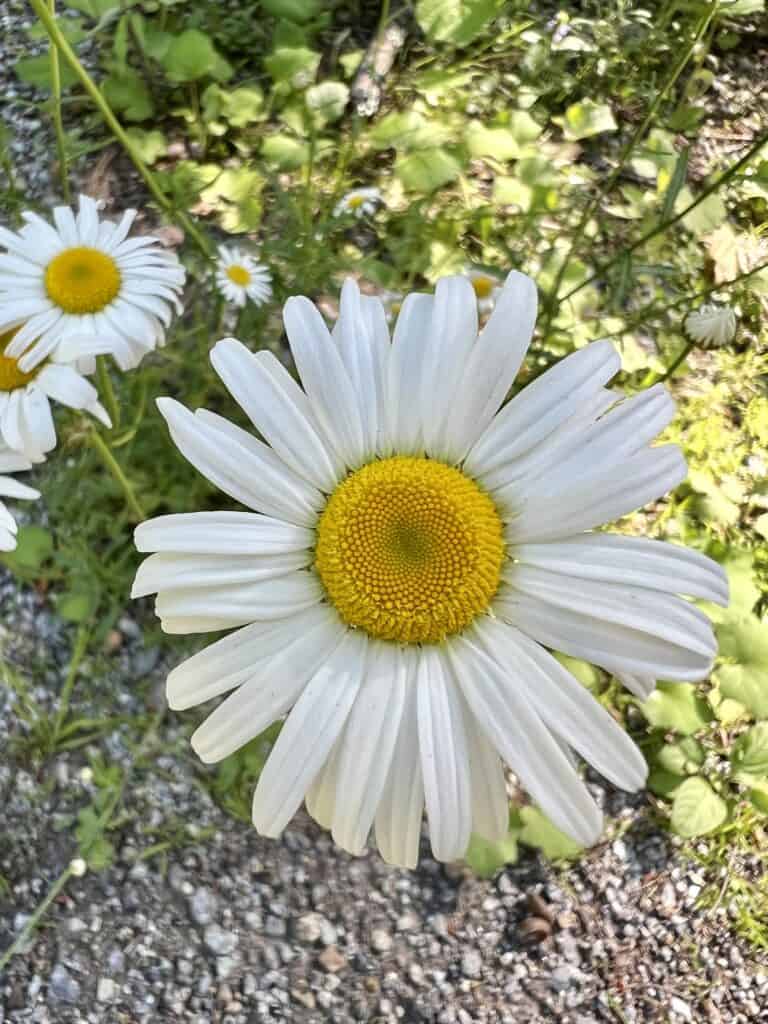
As interest in herbalism grows, it’s worth rediscovering these humble plants and integrating them into our modern lives. With proper respect and preparation, oxeye daisy can become a trusted part of your natural wellness toolkit.
Related Posts You May Enjoy:
- Red Clover Tea Benefits: A Soothing Herbal Remedy
- Dandelion Taraxacum: Medicinal Qualities & How to Make Dandelion Tea
- Lavender Tea: Discover Its Medicinal Benefits
Here’s an SEO-optimized FAQ section for your blog post on oxeye daisy medicinal uses, answering commonly searched questions on Google. This will help improve your post’s visibility and give your readers helpful, trustworthy info.
🌼 Frequently Asked Questions About Oxeye Daisy Medicinal Uses
How do you identify oxeye daisy?
Oxeye daisy (Leucanthemum vulgare) has white petals, a yellow center, and grows on a single, hairless stem. The basal leaves are spoon-shaped, while the upper stem leaves are narrow and toothed. It typically grows in open meadows, roadsides, and disturbed soil.
What’s the difference between oxeye daisy and chamomile?
While they look similar, chamomile has smaller, softer petals and a sweet apple-like scent. Oxeye daisy has larger blooms, a more bitter flavor, and does not have the strong fragrance of chamomile. Medicinally, both are used for calming and digestion, but oxeye daisy has stronger astringent and respiratory-supporting properties.
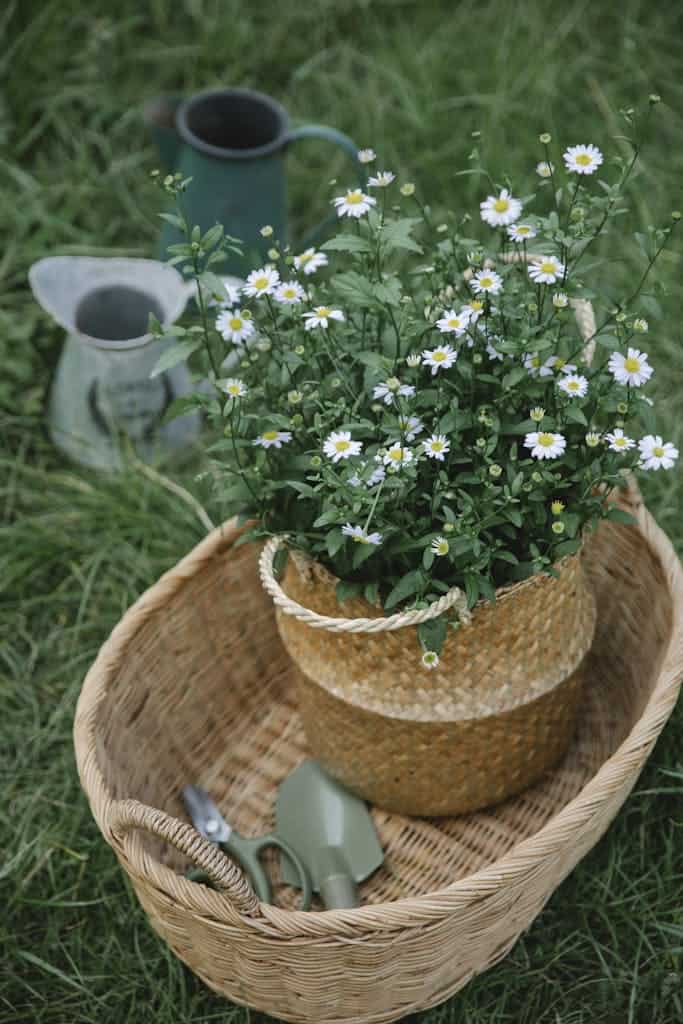
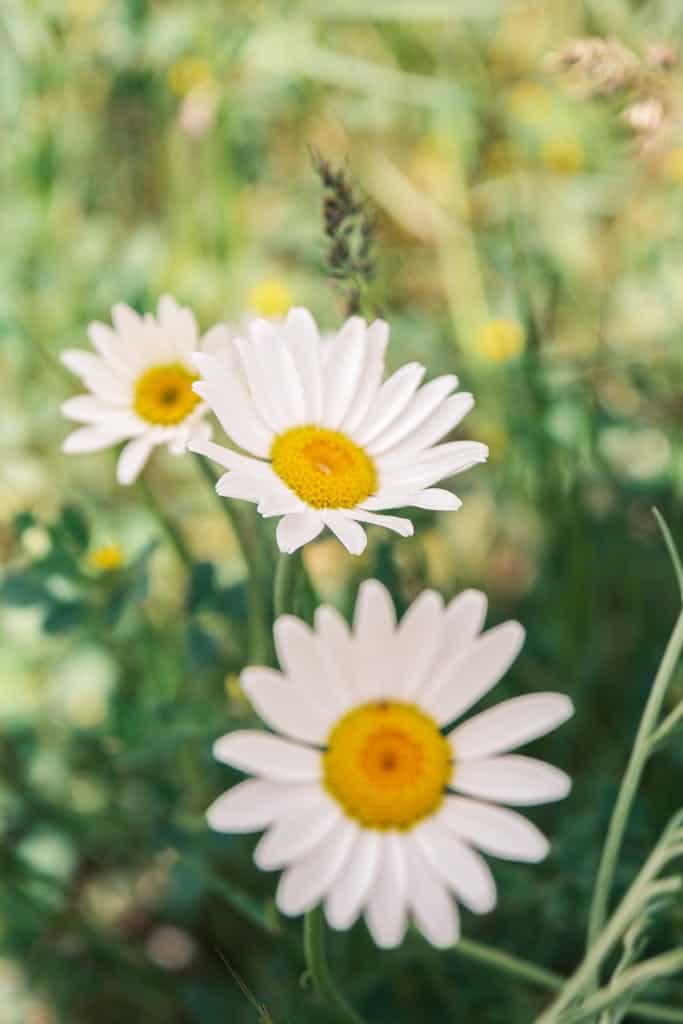
Can I use fresh oxeye daisy instead of dried?
Yes, fresh oxeye daisy flowers can be used for infused oils, salves, or topical poultices. However, for teas or tinctures, dried flowers are often preferred due to better shelf stability and concentrated potency.
Is oxeye daisy invasive?
In some regions, yes. Oxeye daisy spreads easily and can be considered invasive in pastures or hayfields. However, for herbalists, it’s a readily available medicinal plant—as long as you harvest responsibly.
Pin for Later!
